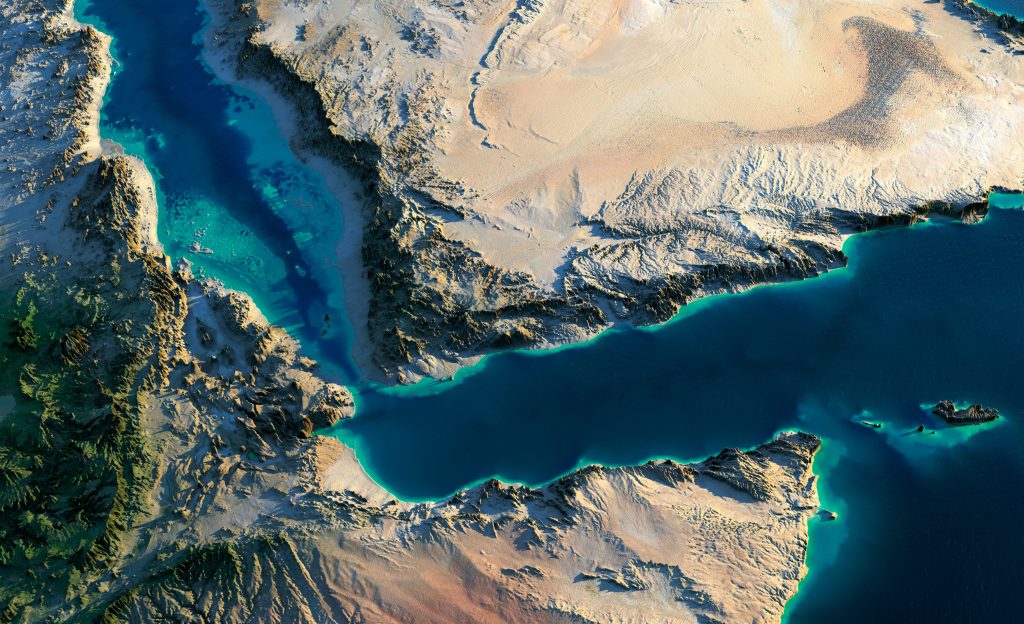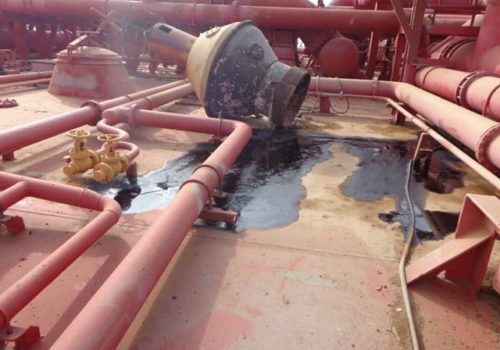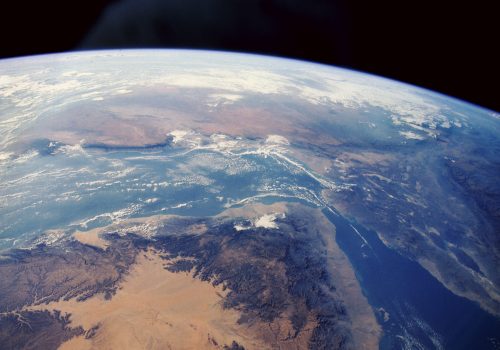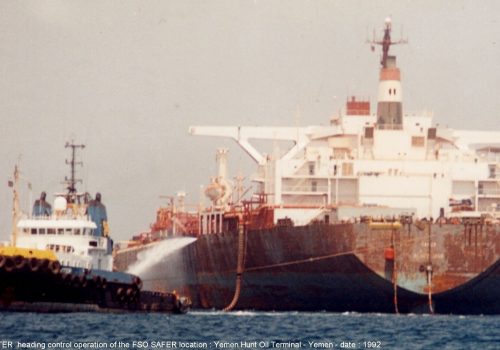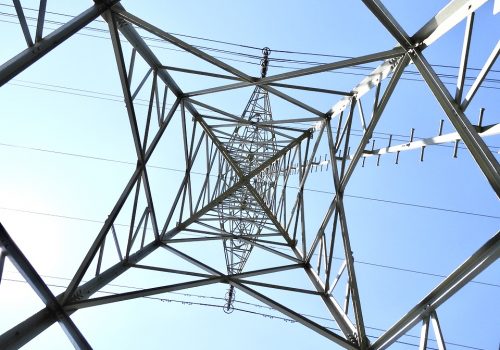The global COVID-19 pandemic has taken hundreds of thousands of lives, curtailed travel, rendered millions unemployed, and caused unprecedented harm to the global economy. At the same time, the pandemic has diverted global attention away from other matters of concern. One of these is the Floating Storage and Offloading Vessel (FSO) SAFER, a converted oil tanker moored four miles off the coast of Ras Isa, Yemen, in the Red Sea and continuing to degrade after years of neglect. If no action is taken, the SAFER will spill as much as 1.14 million barrels of Marib Light crude into the water. Much of the world’s activity may be on hold, but the ongoing corrosion on the SAFER is not taking a break to wait out the pandemic.
In the best-case scenario of a million-barrel spill, up to 75 percent of the oil on board, which has been sitting untended since 2015, would evaporate within a couple of days. In other words, the best-case scenario is a spill the size of the Exxon Valdez disaster. While such a spill involving a light crude oil would be hard to address under normal circumstances, the limited capacity caused by the COVID-19 restrictions means that the impact would be all but impossible to mitigate. Prior work has been done to game out the disaster, and recent efforts have produced more insights. But the main conclusion remains inescapable: without timely action, a key region of the world may well face an environmental and humanitarian disaster that could easily have been averted—one that could now arrive with singularly destructive timing and inaugurate decades of hardship on top of already dire circumstances.
Models
One recent model of a potential spill involving most or all of the SAFER’s contents indicates that, with the arrival of the Red Sea’s summer surface water circulation this May, some of the oil would spread northward toward Saudi Arabia, but most would travel south along the Yemeni coast, hitting the key port of Hodeidah—the main gateway for international aid during Yemen’s civil war—on its way toward the chokepoint of the Bab el Mandeb Strait. Regardless of where the spill meets the coast, it would threaten to contaminate some of the critical desalination plants that supply the Red Sea littoral states with drinking water—only about a three-day supply at any one time. Entirely apart from this potential humanitarian crisis, or the possible impact on operations in Hodeidah, the summer scenario means a potentially devastating blow for fisheries and coastal ecosystems—vital coral reefs and mangroves among them—along much of the Red Sea coast.
In a best-case response scenario, such a destructive outcome could be mitigated with immediate intervention that manages to contain the SAFER’s contents close to the vessel, and most importantly, well away from the shore. But a buoyant oil, like Marib Light, on the dense saline waters of the Red Sea, with brisk winds blowing southward, could spread toward and down the coast at considerable speed; if the winds were sufficient to generate whitecaps, or if the spill extended just 4.5 miles toward the turbulence of the shoreline, Marib Light would become entrained and mix down the water column, delivering a deadly toxic shock to every marine and coastal ecosystem in a wide area, and threatening to enter even the most sophisticated intake systems for desalination plants.
Alternatively, if the SAFER’s storage tanks have corroded to the point that at least some of them have vented over the past few years, then it is likely that most of the crude oil’s volatile light ends have already evaporated. On the one hand, that onboard weathering would make the oil less immediately toxic; on the other, it would mean that a spill would be more viscous and behave very differently in the water, sooner reaching the point of depositing long-lasting toxins, such as heavy polynuclear aromatic hydrocarbons (PAHs), that would impact marine life for generations.
A catastrophic spill from the SAFER would therefore pose a daunting challenge in the best of circumstances; in the midst of a global pandemic and on the edge of a conflict zone, the chances of an early and adequate response are vanishingly small. The indisputably correct course is for key stakeholders to negotiate the political and technical hurdles involved and take preventive action.
The Key Question:
The question then becomes: given this precarious situation that had presented a nearly intractable problem before the pandemic, what can be done now to safeguard the Red Sea and avert a crisis that will further diminish food security, marine biodiversity, regional stability, and global commerce? There are multiple issues to tackle in answering this question, but three stand out: political, commercial, and technical.
Political
Until recently, the political considerations appeared the most challenging, but the context has changed. The pandemic has allowed Saudi Arabia and the United Arab Emirates (UAE) to declare and then extend, without losing face, a shaky but promising unilateral cease-fire. The Houthis, widely viewed as the principal obstructionists in resolving this issue, can ill afford the reputational damage of allowing the crisis to unfold. As COVID-19 enters Yemen, and as the conflict takes new shape, the Houthis face a choice between seeking the credibility to govern the areas they control or confirming themselves as irresponsible agitators who lack human decency and even minimal care for their own people, much less others. With all the documented warnings about the impact of the SAFER’s demise on the humanitarian situation in Yemen, allowing the tanker to spill would constitute such gross criminal negligence on their part that they would effectively forfeit any claim to legitimacy.
Embedded in the Houthis’ choice is also a decision that Iran must make. Amid the maximum pressure campaign, significant losses from COVID-19, and the painful experience of having shot down a plane full of its own civilians, the Rouhani government has already had a difficult start to 2020. The international optics are such that in the event of a catastrophic spill, Iran could not avoid blame for having failed to facilitate a resolution to the SAFER. The devastation to the Red Sea would also significantly damage, if not ruin, chances for the Houthis and Iranians to improve relations with any of the littoral states.
The risks here do not fall only on partisan actors; the United Nations (UN) cannot afford the fallout of the SAFER’s demise. The UN is widely regarded as the party best placed to facilitate the political, commercial, and technical resolution of the matter, and its credibility has suffered already from public awareness of how its large expenditures regarding the SAFER have produced no results. That deficit in confidence can be overcome now with well-informed and decisive action to address the situation comprehensively. Given the fluidity of the situation around the SAFER and the range of possible technical approaches involved, any tender for expert assistance must be crafted so as to enshrine ample flexibility. Any misstep on that front, including the appearance of nepotism in the selection process, could be fatal to the resolution of the matter.
Finally, regional actors including Oman, Saudi Arabia, Jordan, Egypt, Djibouti, and organizations such as the African Union (AU) and the Intergovernmental Authority on Development (IGAD), should be calling for a speedy resolution, as they all stand to suffer from the SAFER’s demise. The threat to desalination, the fisheries sector, food security, coral and marine life, coastal tourism, shipping access, and the health of the Red Sea overall should inspire serious concern.
Commercial
On the commercial front, there have been a few significant changes in context that also affect the potential resolution of the matter. The most obvious is the dramatic drop in the price of oil. While Brent Crude was worth roughly $67 per barrel at the end of 2019, some crude futures dropped significantly below $0 in April 2020, for the first time ever. The oil market has plummeted. The COVID-19 pandemic has driven demand to a decades-low point with no certainty as to when it may begin to rise again, and storage space for the surplus of crude is rapidly filling. Furthermore, the ongoing delay in removing the oil stored on the SAFER further degrades its commercial viability, as it is currently impossible to know its actual quantity and composition. While the Houthis had, at one point, hoped to get $80 million for the cargo, that dream has evaporated. With the glut of oil, the possible or even probable degradation of the cargo, and the controversial history of this particular crude, any trader would almost certainly require a substantial discount off the already low oil prices. Even for a price of $5 million, it would likely be difficult to sell. The value of the oil on the SAFER, therefore, may not even cover the costs of the removal and salvage operation at this point. So, any argument by the Houthis or Hadi Government that they should receive the economic benefit of the SAFER would equate to requesting a bill for services rather than a payout.
Technical
The technical challenges of preventing a major spill from the SAFER are formidable, and they grow more so daily as the vessel continues to degrade in the extremely corrosive environment of the Red Sea. The prerequisite for resolving those challenges is safely accessing the vessel. The area around the SAFER is rumored to have been mined, and the individual who placed the mines is alleged to have been killed. There is also the danger of unmoored mines drifting northward with the winter circulation from their original deployments farther south. Furthermore, the equivocation of the Houthi leadership makes any promise of safe access questionable. Even if Houthi leadership honors its guarantees of safety, Houthi forces along the coast, acting on their own initiative, may see an operation around or on the SAFER as an inviting target to attack so as to garner attention for themselves. Even in the absence of security threats, there are safety considerations regarding the vessel itself, as well as the oil on board. Consequently, the technical issues are set against a backdrop of safety and security concerns.
On the technical front, the first of the challenges would be to assess the structural integrity of the ship and the condition of the oil stored on it. While the technology exists to scan the hull from the outside for thinned areas and thermal signatures that indicate trouble spots, only by getting on board the vessel can experts assess its overall condition, including that of its interior piping and instrumentation, and take samples to determine the condition of the oil in its thirty-four storage tanks. That venture in itself poses very real hazards to the boarding team, as photos taken over a year ago indicate that the vessel was already manifestly unsafe.
After those assessments comes the technical challenge of how to either secure the vessel or safely evacuate the oil. A number of questions will need to be answered. Could the oil be safely removed in situ? Alternatively, could the SAFER be safely towed to a lightering zone where its tanks could be more securely emptied? If discharging the oil is not an option, how might key maintenance systems, such as the inerting and anti-corrosion systems, be restored enough to help keep the vessel intact, at least for a while? Above all, how could such a salvage operation be orchestrated to ensure the safety of the team involved?
The technical challenges are not necessarily limited to the SAFER itself, however. The vessel is the terminal of the 430-kilometer Marib-Ras Isa pipeline. Even if the pipeline is shut down and its contents are static, there is still a vast quantity of oil sitting in nearly five miles of length between the shore and the vessel. If that pipeline were ruptured, it would probably spill large quantities of oil as well. In many such cases, hydrostatic pressure would tend to keep the oil contained within the pipes; but given the vast difference in density between the highly saline Red Sea water and the extremely light Marib Light crude, there is a much higher chance that the oil would gradually escape. The relative risk would depend on a few factors, including possible rises and dips in the submarine pipeline itself, but it must be taken into account. Though the pipeline might be in far better condition than the SAFER, it may need to be emptied as well.
Conclusion
It is a truism of history that widespread disaster can sometimes create unexpected openings for resolution and renewal. Such could be the case with the SAFER in the time of COVID-19. In the midst of a global crisis, key stakeholders in the Red Sea region and beyond can find a way to resolve a regional crisis. If they fail to look beyond immediate enmities and various forms of territorialism, they will be guilty of allowing what is already a regional tragedy to take a far darker turn. But if they can muster sufficient responsibility, creativity, and technical ingenuity, they can write the ending this story desperately needs.
Dr. Ian Ralby is founder and CEO, Dr. David Soud is head of research and analysis, and Rohini Ralby is managing director at I.R. Consilium, LLC. Dr. Ian Ralby is also a senior fellow with the Atlantic Council Global Energy Center. You can follow Ian (@ImRalby) and I.R. Consilium (@IRConsilium) on Twitter.
Read more by these authors
Learn more about the Global Energy Center
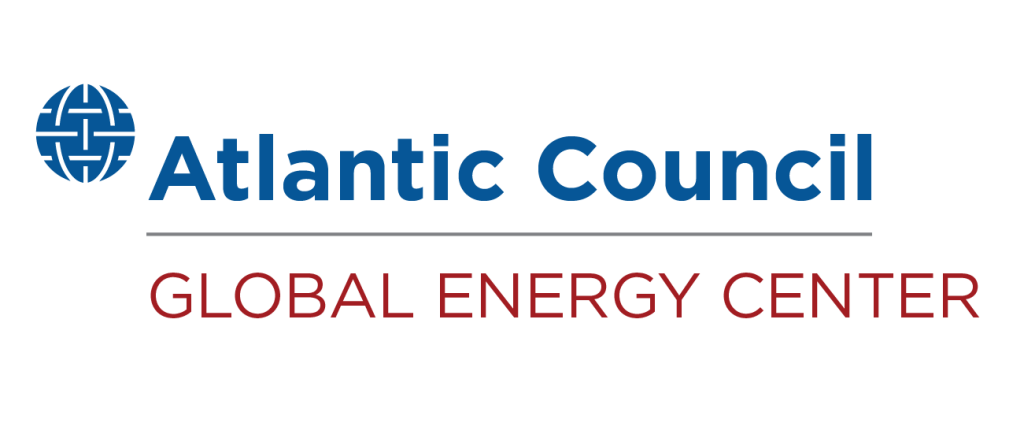
The Global Energy Center develops and promotes pragmatic and nonpartisan policy solutions designed to advance global energy security, enhance economic opportunity, and accelerate pathways to net-zero emissions.
Image: Exaggerated precise relief lit morning sun. Near East - Gulf of Aden & Red Sea (Photo by Anton Balazh/ ShutterStock)
